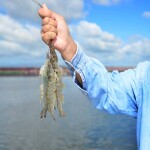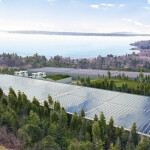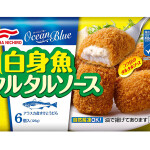Brian Hagenbuch spent a decade in South America, where he was a journalist for Reuters and Time Out in Buenos Aires and Rio de Janeiro. He now lives in Seattle and works as a freelance writer and translator, as well as a commercial fisherman in Bristol Bay.
Author Archive
Senator Maria Cantwell (D-Washington) called the proposed Pebble Mine in Alaska “a major threat to Pacific salmon” at a hearing in Washington D.C. on Wednesday, 11 March.
Cantwell’s comments came while questioning Neil Jacobs, who has been nominated to serve as the next administrator of the National Oceanic and Atmospheric Administration (NOAA).
The proposed gold and copper mine would sit near the headwaters of one of the most
… Read MoreThe Alaska Department of Fish & Game (ADF&G) is forecasting a mixed bag for the upcoming Copper River salmon season. Biologists predict sockeye numbers will be below average, but say the market could see some compensation with a strong Chinook salmon showing …
Photo courtesy of
… Read MoreTrade on permits in Alaska’s salmon fisheries has been generally sluggish, as high prices in booming fisheries, warming waters, and market uncertainties are giving fishermen pause.
Fishermen are still looking to get into Bristol Bay after consecutive seasons of robust runs have coincided with strong prices, culminating in a 2019 season that was the most lucrative in history. Last year’s record-breaking preliminary ex-vessel value of
… Read MoreThe Pacific cod fishery in the Gulf of Alaska will be shut down in 2020 because of low numbers that biologists are tying to high water temperatures caused by global warming ...
Photo courtesy of Max
… Read MoreThe Alaska Department of Fish & Game (ADFG) predicts a 2020 sockeye salmon run exceeding the ten-year average by 6 percent for Bristol Bay ...
Photo courtesy of
… Read MoreAn invasive, quick-spreading aquarium plant could forewarn of the upcoming difficulties that Alaska salmon runs may face as marine environments change from human intervention.
The plant is elodea, which is native to the lower 48 U.S. states and is commonly used in aquariums. Researchers say it was first dumped into Alaska waters in the early 1980's with the unwanted contents of an aquarium and has since adapted to colder water. Now, it is being
… Read MoreFor years, Arron Kallenberg kicked around the idea of leveraging his family’s three generations of Alaska commercial fishing heritage into a direct-to-consumer seafood business.
He finally took the leap to create the now-thriving Wild Alaskan Company in 2017, but said the story goes all the way back to 1926, when his grandfather, Robert C. Kallenberg, moved from New Jersey to Alaska and began commercial fishing on a wooden sailboat in
… Read MoreAlaska pollock producers know they turn out a healthy, sustainable, and abundant protein source with a relatively small carbon footprint. Now, they are hoping new marketing efforts will expose more households to the virtues of wild Alaska pollock and dramatically increase consumption of the fish.
The Alaska pollock fishery is the largest by volume in the United States, scooping up an average harvest of around 1.3 million metric tons over the
… Read MoreThe Genuine Alaska Pollock Producers (GAPP) held its first-ever Wild Alaska Pollock Annual Meeting in Seattle, Washington on Tuesday, 29 October. The tagline of the conference was “Celebrating our Perfect Protein” and featured talks from politicians, marketers, economists, retailers, and others.
The meeting focused on how industry professionals can push wild Alaska pollock to center stage as an abundant, healthy, and sustainable
… Read MoreBiologists were shocked in 2017 when they found that the numbers of Pacific cod had risen exponentially in the northern Bering Sea off the coast of Alaska. Now, researchers at NOAA’s Alaska Fisheries Science Center have used genetic testing to prove that those fish, enabled by warming waters and a lack of sea ice, have moved north from the southeastern Bering Sea.
Surveys as recent as the 1970’s revealed “trace amounts”
… Read More















